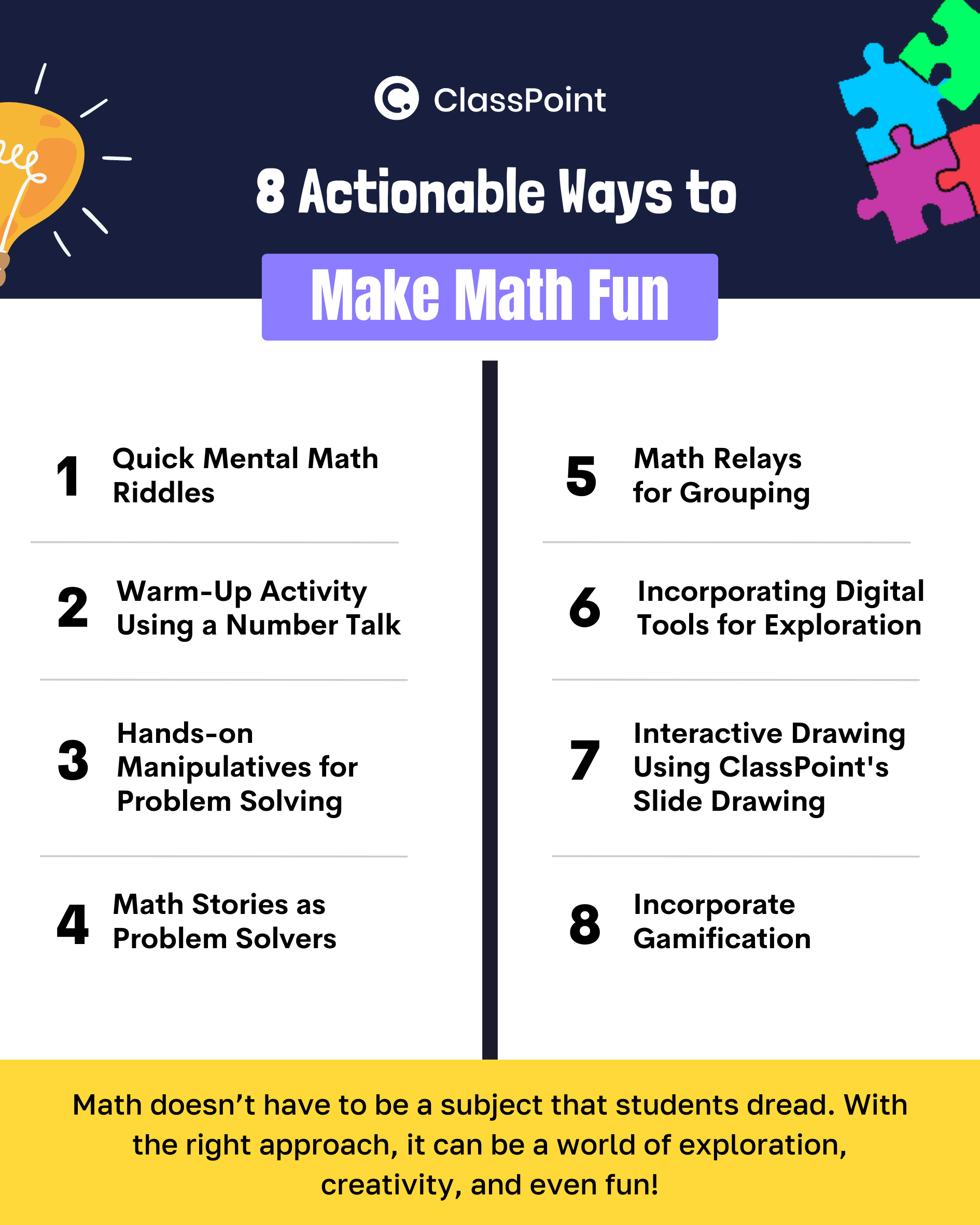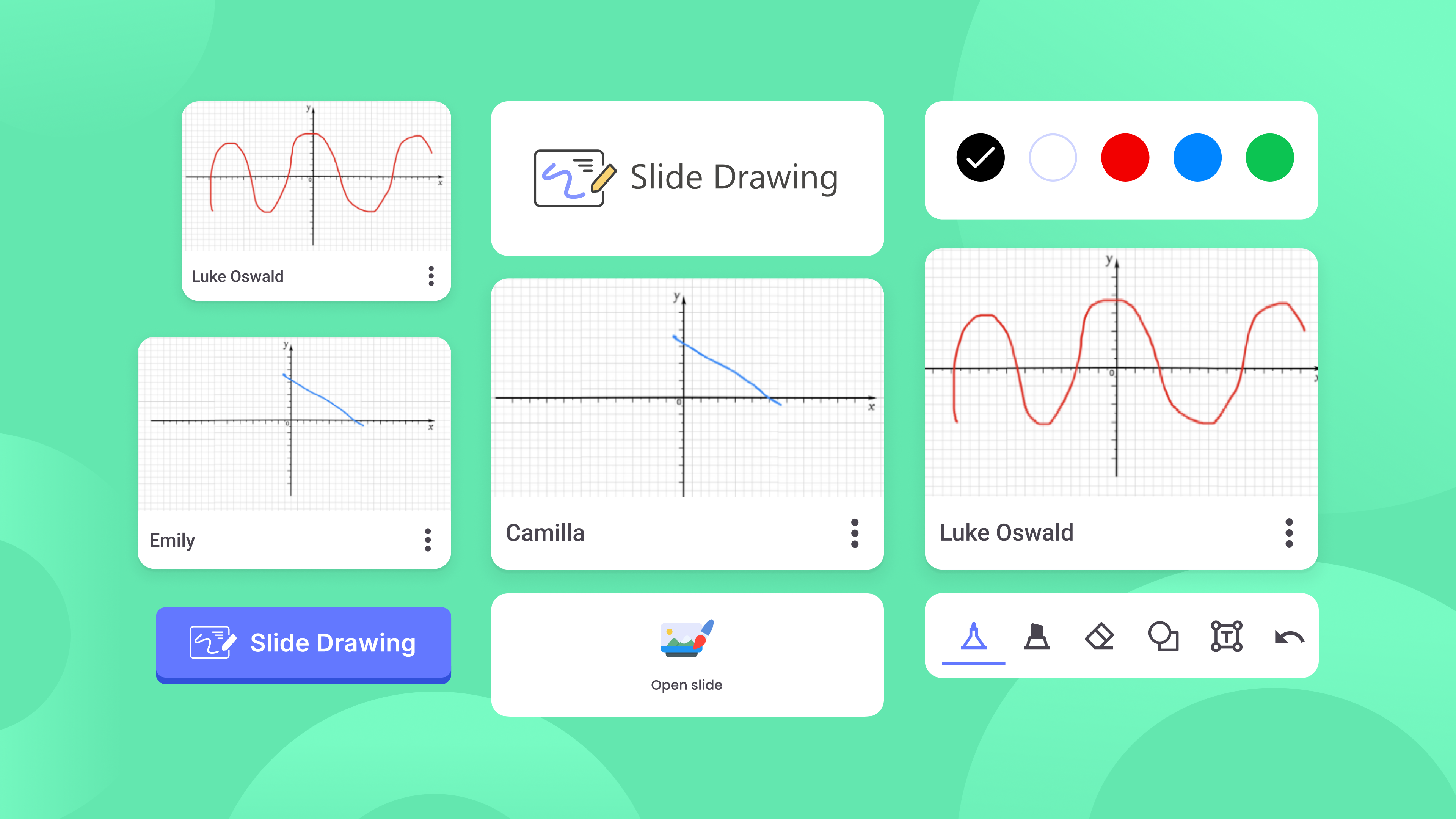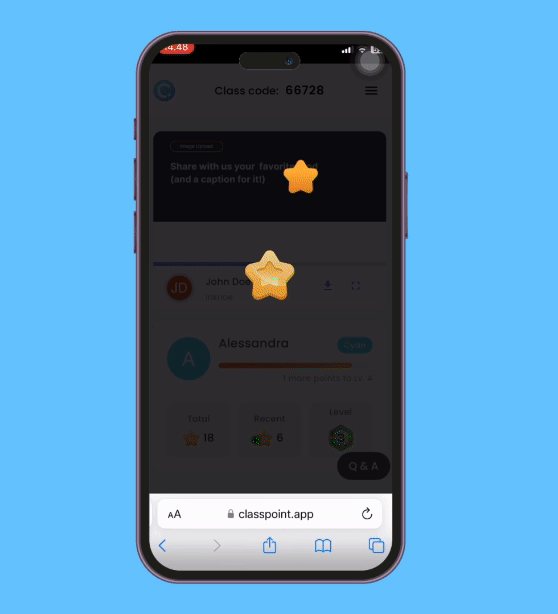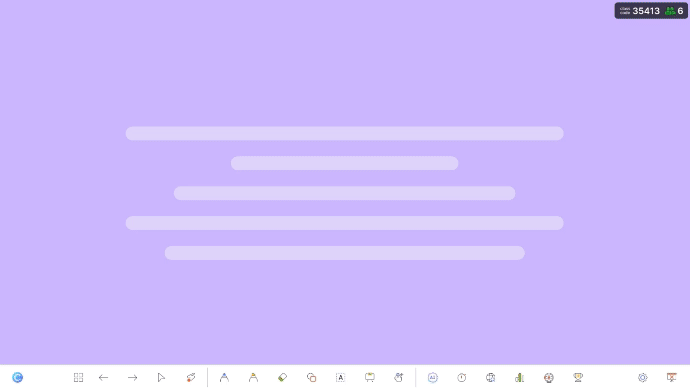Math is Fun! Here’s Why: 8 Non-Boring Ways to Teach Math Applicable to All Levels
Math is fun—a statement that might surprise some students but is absolutely achievable with the right approach. By moving beyond traditional worksheets and textbooks, you can unlock the excitement and engagement that math truly offers. Through creative, hands-on activities, students can experience the joy of problem-solving and discovery in ways that make learning feel like play.
With this in mind, we’ve compiled a list of unique and non-boring ways to show students that math is fun. From warm-ups that challenge their thinking to interactive activities that bring math concepts to life, these ideas will help transform your classroom into a space where math isn’t seen as a snooze fest.
From Math is Scary to Math is Fun
For many students, math can feel intimidating or boring—a subject filled with abstract numbers and formulas that seem disconnected from real life. It’s not uncommon for students to see math as a chore rather than something to be enjoyed. But what if we could shift this mindset? What if we could show students that math is fun when it’s approached creatively and practically?
Understanding Why Students Fear Math
Math anxiety is a prevalent issue among students, affecting their performance and attitudes towards the subject. This fear can stem from various psychological, social, and educational factors. Here are some key reasons, supported by statistics and research findings, that explain why students often fear math.
1. Fear of Failure
A significant contributor to math anxiety is the fear of failure, making “math is fun” a distant idea. Research from Stanford University found that children with math anxiety exhibit heightened activity in the brain’s fear center when faced with math problems, similar to individuals with phobias. This fear can lead students to avoid math altogether, as they associate incorrect answers with negative outcomes, such as being labeled a “bad student” or feeling inadequate.
2. Negative Past Experiences
Many students develop a fear of math due to negative experiences in the classroom, such as humiliation from making mistakes or receiving harsh criticism from teachers. A study indicated that 77% of children with math anxiety were normal to high achievers, highlighting that even capable students can struggle with anxiety due to past experiences.
3. Cultural and Social Influences
Cultural biases can also exacerbate math anxiety. For instance, societal stereotypes suggest that boys are naturally better at math than girls, which can lead to lower confidence among female students. Research shows that girls tend to experience higher levels of math anxiety compared to boys, which can persist throughout their academic careers.
4. Teaching Methods and Classroom Environment
The way math is taught significantly impacts students’ perceptions of the subject. High-pressure environments and an emphasis on speed can hinder students’ ability to engage with math concepts. Studies suggest that when math is taught in a supportive, exploratory manner, students are less likely to experience anxiety and more likely to improve their performance. For example, students who learn through problem-solving strategies rather than rote memorization tend to achieve better outcomes.
5. Working Memory Overload
Math anxiety can overload students’ working memory, making it difficult for them to process information effectively. Research indicates that anxious students may struggle with tasks that require carrying over numbers in addition problems, leading to further frustration and a sense of failure.
Overcoming Math Anxiety
Math anxiety is a common challenge that can prevent students from fully engaging with the subject. However, with the right strategies, you can help students build confidence and develop a positive relationship, eventually helping them see that somehow, math is fun. Here are five effective ways to reduce math anxiety:

- Create a Judgment-Free Zone: Encourage a classroom environment where mistakes are seen as learning opportunities. Normalize errors as part of the process and celebrate effort over immediate accuracy.
- Focus on Understanding, Not Speed: Emphasize that math is about understanding concepts, not racing through problems. Give students the time they need to think critically, reason, and arrive at solutions without the pressure of timed exercises.
- Incorporate Play and Exploration: Integrate games and exploratory activities that present math in a fun and relaxed way. When students approach math through play, they often engage more freely and experience less anxiety.
- Break Down Problems into Manageable Steps: Help students tackle complex problems by breaking them down into smaller, bite-sized steps. This makes difficult concepts feel more approachable and less overwhelming.
- Offer Regular Encouragement and Support: Provide positive reinforcement regularly to boost student confidence. Acknowledge their progress, no matter how small, to help them feel more capable and resilient in the face of challenges.
8 Actionable Ways to Help Students See That Math is Fun

1. Quick Mental Math Riddles
Starting your class with a riddle that challenges students to think quickly and flexibly is a great way to warm up their brains. Quick mental math riddles are short, engaging puzzles that test students’ ability to perform calculations mentally. These riddles help sharpen number sense, boost confidence, and create a playful atmosphere in the classroom.
How to do it: For example, you could present a riddle like: “I am a two-digit number. My tens digit is five more than my ones digit. What number am I?” Riddles like these encourage students to explore different possibilities in their heads, activating their problem-solving skills without the pressure of right or wrong answers right away. It’s an easy way to spark curiosity and ease into the day’s lesson.
How it helps: Mental math riddles encourage students to think outside the box and improve their mental agility. They help students build confidence in their mathematical abilities by solving problems quickly without relying on written calculations, which can help reduce math anxiety and foster a positive attitude toward math early in the lesson.
2. Warm-Up Activity Using a Number Talk
Number talks are an excellent way to build numeracy and promote flexible thinking. These brief, student-led discussions encourage participants to solve problems mentally and explain their thought processes. The goal is to explore different strategies, build confidence, and foster a deeper understanding of numbers.
How to do it: Pose a simple calculation to the class, like 19 + 26, and ask students to mentally work through the problem. Then, invite them to share how they arrived at their answers. Encourage different methods—some students may break numbers apart, others might visualize the problem or round the numbers first. This creates an open environment where multiple strategies are valued.
How it helps: Number talks help students develop a strong sense of numbers by allowing them to think critically and flexibly. They also promote collaborative learning, as students learn new strategies from their peers and gain confidence in their own reasoning abilities.
3. Math Stories as Problem Solvers
Introduce the day’s concept with a short story that leads into a math problem, connecting narrative to numbers. This method helps students see math as part of everyday life, not just an abstract concept, and allows them to engage their imagination alongside their logic.
How to do it: Begin by crafting a short, relatable story that includes a problem for students to solve. For example, you might tell a story about two friends baking cookies, and they need to figure out how to divide the ingredients evenly. Present the problem embedded in the story, and ask students to work through the math to help the characters. You can even add visuals or props to make the story more immersive.
How it helps: Story-based problem-solving makes math feel more relevant and accessible by anchoring abstract concepts in real-life contexts. It encourages creative thinking and helps students understand the application of math beyond the classroom.
4. Hands-on Manipulatives for Problem Solving
Using physical objects like building blocks or counters helps students explore abstract math concepts in a concrete, tactile way. Manipulatives provide a hands-on approach to learning, making concepts like fractions, geometry, and algebra easier to understand.
How to do it: Provide students with objects such as fraction tiles, base-ten blocks, or pattern blocks to work through problems. For instance, when teaching fractions, have students use fraction tiles to visualize the parts of a whole. Encourage them to manipulate the pieces to add, subtract, or compare fractions, allowing them to see the relationships between the numbers.
How it helps: Manipulatives give students a tangible way to explore mathematical concepts, which can be especially beneficial for visual and kinesthetic learners. They help bridge the gap between abstract ideas and concrete understanding, making math more accessible and less intimidating.
5. Math Relays
Math relays turn problem-solving into an active and competitive group activity. By adding movement and a sense of urgency, students can work together while practicing math skills in a fun and engaging way. This approach helps solidify concepts through repetition and teamwork.
How to do it: Divide students into teams and set up relay stations, each with a math problem. Students race from one station to the next, solving a problem before tagging a teammate to continue. Problems can be aligned to your lesson—such as solving equations, calculating measurements, or working with fractions. The team that completes the relay first with the most accurate answers wins.
How it helps: Math relays encourage collaboration and allow students to apply math in a dynamic, physical context. The movement and competition boost energy and engagement while reinforcing concepts in a memorable way.
6. Incorporating Digital Tools for Exploration
Digital tools like GeoGebra or Desmos allow students to visualize and explore math concepts in a way that goes beyond pen and paper. These interactive platforms make abstract concepts more concrete and let students experiment with variables and shapes in real-time.
How to do it: Introduce a digital tool that complements your lesson, such as using GeoGebra to explore geometric constructions or Desmos to manipulate algebraic functions. Let students use these tools to experiment with different scenarios, test their understanding, and explore the relationships between variables or shapes.
How it helps: Digital tools provide an interactive, visual approach to learning math, helping students grasp complex concepts through exploration. They also allow students to work at their own pace, deepening their understanding by interacting directly with the material.
We’ve curated a list of no-installation, web-based Math tools that you can use to easily engage with your students:
| 99math | An interactive game-based learning platform that helps students practice math skills and compete in live games with their classmates. |
| NCTM Illuminations | This resource offers a variety of engaging, standards-based materials, including games, brain teasers, and interactive activities tailored to different grade levels. |
| MathsBot | A comprehensive resource that includes tools for visualizing numbers, generating questions, and providing online worksheets, making it a versatile option for K-12 educators. |
| Mathigon | Features a tool called Polypad, which allows students to explore geometric concepts and manipulate shapes to understand surface area and other properties. |
| Happy Numbers | A subscription-based platform for pre-K to grade 5 that helps students build understanding of math concepts through engaging, interactive activities. |
| Prodigy | A game-based learning platform for grades 1-8 where students can practice math skills in a fun, interactive environment while tracking their progress. |
| EquatIO | A tool that allows teachers to create mathematical equations and expressions easily, making it a useful resource for digital math instruction. |
| Sumdog | An adaptive learning tool that provides game-based math activities for students in grades K-8, with features that allow teachers to track student progress. |
7. Interactive Drawing Using ClassPoint’s Slide Drawing
Interactive drawing brings a creative and visual element into math lessons, helping students better understand and retain concepts. ClassPoint’s Slide Drawing enables students to draw directly on the slides you’re presenting in PowerPoint, making learning both collaborative and visually engaging.

How to run a ClassPoint Slide Drawing activity:
- Download and install ClassPoint. Upon successful installation, ‘Inknoe ClassPoint’ tab will then be automatically added onto your PowerPoint ribbon.
data-title="Try ClassPoint for Free"
data-description="800,000+ educators and professionals use ClassPoint to boost audience engagement right inside PowerPoint."

- Create a problem slide in which students can annotate on. It could be a geometric shape, a graph or a ready canvas ClassPoint whiteboard that you can easily access right in slide show with XY graph, 4-quadrant, and grid paper options.

- While in edit mode, click on Slide Drawing from the Interactive Quiz selection in the Inknoe ClassPoint tab. Play around with the available question options on the appearing side panel.

- Go to slide show and run your Slide Drawing activity. Invite your students to join your class via classpoint.app using any device and any browser. Provide them the class code right up top your slide show screen so they can enter.
- See as student drawings come back right to your PowerPoint presentation in real time which you can save for review and/or insert as part of your deck.

8. Incorporate Gamification
Gamification transforms traditional lessons into competitive and motivational experiences, encouraging students to actively participate and stay engaged. ClassPoint’s gamification tools, like leaderboards and point systems, add an element of fun and competition that can turn even routine math exercises into exciting challenges. Perfect to go with Math formative assessments!
What better way to follow thru with an interactive Math activity? Offering rewards. Here’s how ClassPoint’s gamification features can keep your students motivated:
- Stars: Award stars to students for participation, correct answers, or creativity. These real-time rewards recognize student efforts and keep them engaged.

- Levels & Badges: As students accumulate stars, they can progress through levels and earn badges, encouraging them to stay committed to their learning and strive for new achievements.

- Leaderboard: Display the top-performing students on a leaderboard, fostering a competitive yet supportive environment where students are motivated to reach higher scores and continue participating.

Read this Math teacher's success story on how she teachers Math effectively with ClassPoint!
Final Thoughts
Math doesn’t have to be something students dread. It can be an opportunity for creativity, collaboration, and thinking in new ways. When we move beyond the usual routines and introduce methods that let students explore and have fun, we help them see math differently.
By making math enjoyable, we help students see it as more than just numbers—it becomes a way to solve problems, think outside the box, and understand the world better. It’s all about how we bring it to life in the classroom, and the possibilities are endless when we approach it with a bit of imagination.
data-title="Try ClassPoint for Free"
data-description="800,000+ educators and professionals use ClassPoint to boost audience engagement right inside PowerPoint."


Comments
Post a Comment